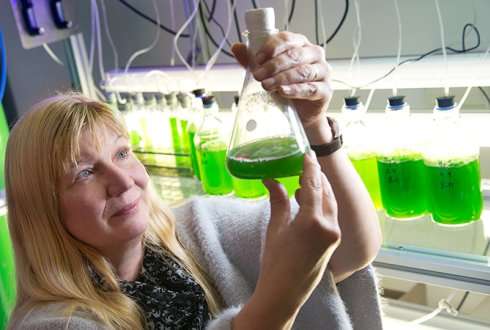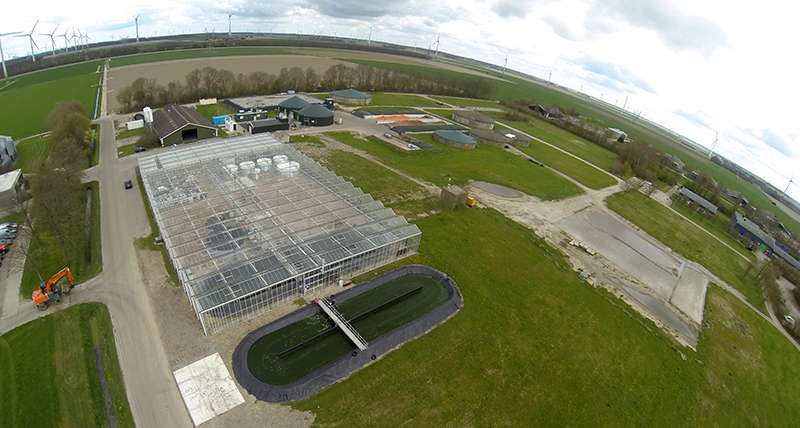Fermentation of manure and biomass can become more economically viable if it is combined with biorefinery and the residual streams are optimally used. The EnergieRijk PPS programme has therefore linked a co-fermenter to biorefinery installations and an algae pond. Although the successful project has now been concluded, the research facilities at the ACRRES premises in Lelystad are still fully operational and used by Wageningen UR plant and animal scientists in cooperation with various companies.
"In the Netherlands we see fermentation as an interesting type of sustainable energy generation," says Rommie van der Weide, senior researcher at ACRRES, Application Centre for Renewable RESources at Wageningen UR. "Fermenting animal manure produces biogas. Adding products such as silage maize to the manure, for example, increases the gas yield nearly tenfold. We call this co-fermentation. It is preferable to use residual materials as a co-material rather than high-quality silage maize. The combination with biorefinery and the use of residual streams reinforces the business case."
Maximum value from green raw materials
The ACRRES testing facilities in Lelystad are fully focused on cooperating with companies to obtain a maximum yield from green raw materials. They include a co-fermenter that is linked to a biorefinery installation. Van der Weide: "In biorefinery we produce bio-ethanol or other chemicals from the carbohydrates in maize and sugar beet using the residual heat from the fermentation system. What remains after biorefinery can partly be used as animal feed, while the remainder is added to the manure in the fermenter."
Low-value raw materials, high-value output
The key to making bio-fermentation economically viable is to select low-value 'co-materials' in addition to manure, Van der Weide explains. "In Lelystad, for instance, we also use feed residue from cattle and low-value grass from nature areas." The output is also important. "At our facilities we work with our partners to initially produce green gas and bio-LNG (liquefied natural gas) for which there is a high demand. But we can also generate energy from the residue from biorefinery." Moreover, a bio-fermenter can be used in a smart grid to enable a more flexible and demand-driven electricity production.
Residual heat for algae
Van der Weide and her colleagues developed open practical test facilities with bio-fermentation as the connecting technology for innovative solutions. Within this framework the Lelystad facilities include a pilot installation for the production of algae that is linked to a co-fermenter. "Animal feed often now includes protein-rich fishmeal from ocean fish. Algae are a good alternative. In Lelystad we are gaining experience in cultivating algae on a pilot scale, in which we use the residual heat and fumes from the co-fermenter and the connected heat and power plant. The algae can then be added to the animal feed of the cattle that produce the manure for the fermenter, which completes the circle."
Large-scale testing
The scale and accessibility of the testing facilities attract many companies to Lelystad concludes Van der Weide: "We test on a larger scale so that we are confronted with upscaling issues without requiring huge raw material streams. This allows us to discover growing pains that remain hidden at the laboratory scale. Together with industry we then search for smart solutions. This way we hope to make a valuable contribution to companies that aim to market their innovations."
Provided by Wageningen University























